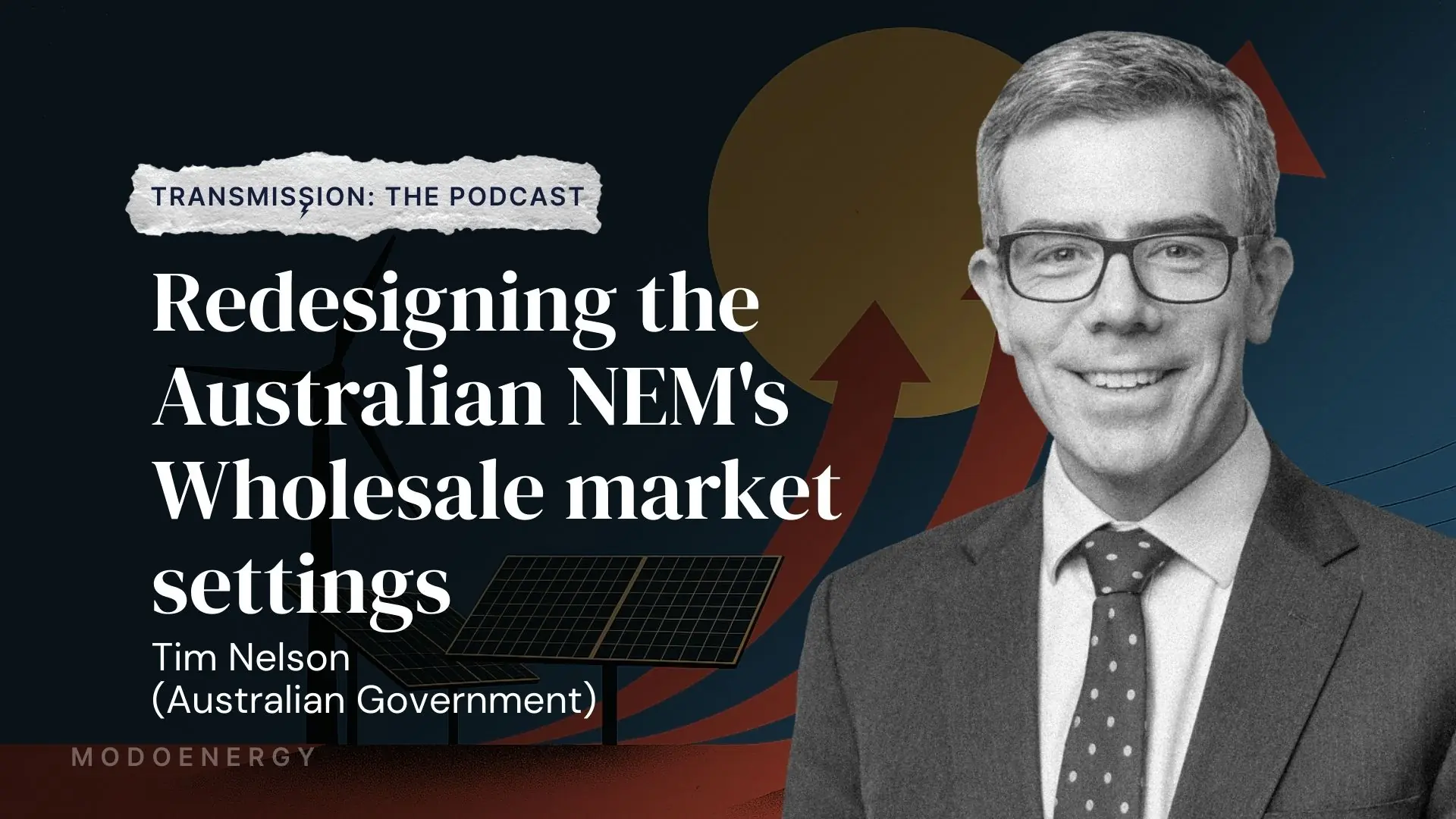In October 2020, National Grid Electricity System Operator (NG ESO) launched Dynamic Containment (DC), much to the delight of the battery energy storage (BESS) community. We’ve seen sky-high prices and procurement targets large enough to accommodate the whole GB BESS fleet. But things aren’t going to stay rosy forever!
In this article we’re going to explore:
- Historical DC requirements.
- What ‘requirements bands’ are and why we need to talk more about them.
- How DC procurement changes impact the requirements for the service.
What’s happened so far?
Since its launch in October 2020, DC prices have held steady at £17/MW/h. Prices have been driven by two things:
- Undersupply - Demand for DC has outstripped installed GB BESS capacity.
- ESO price cap - DC has a price cap that reflects the cost of ‘alternative actions’ that can be taken to manage frequency.
Figure 1 (below) shows the relationship between prices and undersupply since October 2020.

While undersupply is clearly the reason for high prices, one thing that is rarely discussed is the minimum and maximum DC requirement - also known as the ‘requirement band’. Let’s explore this in more detail.
What’s a requirement band?
In the monthly FFR tenders, communicating procurement targets was relatively simple. The ESO simply told the market ahead of time its requirement for primary, secondary and high response, for EFA blocks 1-6, for each month.
For DC this isn’t the case. Instead, the ESO tells the market both a minimum and maximum requirement for each month. This means that market participants can expect the ESO’s requirement to fall somewhere within this range on any given day - we’ll call this the requirement band.
Here’s the difference between the two:
- FFR - “For each day in August, there’s a 400 MW requirement for primary response in EFA block 4”
- DC - “For each day in August, we’ll need somewhere between 400 MW and 700 MW of DC-high.”
In an undersaturated market, there’s nothing to tell the above two statements apart - the ESO will simply procure as much as they can get their hands on. But in a saturated market that is not the case. And it looks like we’ll be hitting saturation soon.
How much DC does the ESO actually need?
Now we’ve explained the idea of a requirement band, let’s take a look at what we’ve seen in the market. Figure 2 (below) shows historical DC procurement compared to both the minimum and maximum requirements set out by the ESO.

As you can see, the accepted volume has never exceeded the maximum or minimum requirement. In theory, the ESO could’ve been varying its procurement target every day. However, because we haven’t seen a single bid rejected for exceeding procurement targets, it’s impossible to tell precisely where these targets have actually been!
All we can say for certain is that the ESO requirement for DC lies somewhere within the requirement band.
The future of DC requirements
So, why does this matter? In September’s frequency response market information report (MIR), the ESO published its first revisions to procurement targets ahead of the move to EFA block procurement.
Ultimately, the changes outlined in the MIR were rolled back almost immediately (we’ll get to this later), but it’s important to take a look at them nonetheless.
Figures 3 and 4 (below) highlight the changes laid out in the ESO’s September MIR. They show the historical requirement band vs. contracted DC capacity plus the future requirement bands. Note the inclusion of EFA blocks on the x-axis, in line with the ESO changes to DC procurement.
On reading this report, DC providers’ understanding of projected requirement bands went from this...

to this...

Let’s have a look at these two graphs and pull out some useful points.
- The revised requirement bands (figure 4) were significantly lower than historical targets. In fact, under these changes, the ESO stated that across September-November there would’ve been “at least one EFA block in [each of] the given month[s] that [had] a 0 MW requirement across the entire EFA block.” That is, there would have been times where the ESO would not have required any DC (see DC FAQs for more details).
- The revised DC requirement bands here are much wider than we’ve seen in the past, with procurement being somewhere between 0 MW and 1150 MW over the last quarter of 2021. This would have given the ESO a lot of wiggle room and presents providers with a huge amount of uncertainty.
- At current procurement levels, we’d have seen a saturated market 45% of the time even when the ESO procured DC at its maximum levels.
- In the worst-case scenario (for providers) demand would have outstripped supply 100% of the time.
- In reality, what actually happens is likely to fall somewhere in the middle - either way, consistent pricing of £17/MW/h would have been wiped out.
What’s going to happen going forward?
This report understandably prompted backlash from DC providers. Within a few days of publication, the ESO held a webinar pushing back the changes to procurement levels (slides available here).
The key takeaways from the webinar were as follows:
- Following industry pushback, the revisions to DC requirements (as seen in Figure 4) would be rolled back.
- In their place, the ESO would continue to use the requirements laid out in the August MIR (see figure 3). That means no variation in DC requirements per EFA block, and requirement bands remaining at their current level (~1GW).
- A transitional arrangement would be put in place to move towards the revised requirements, allowing providers to get comfortable with the new procurement rules.
- The transitional arrangement will be designed to give providers one month’s notice of any changes to procurement levels.
So, DC providers can breathe a sigh of relief (at least for the time being). Figure 5 (below) explores this in more detail.

- Under the most recently announced, projected requirement bands, DC procurement is set to exceed the ESO’s minimum monthly requirement in both November and December (assuming no new DC market entrants).
- This means we could see some days during November and December where supply exceeds demand. If this happens, we’ll get our first glimpse competition within DC - this will mean rejected capacity, and prices falling from the £17/MW/h cap.
The transitional arrangements could see this change at a month’s notice, bringing saturation and falling prices even closer. Moreover, with uncertainty around exactly where procurement targets will fall within the requirement band, it’s hard to say precisely when we’ll reach saturation.
For the time being, we’re playing something of a waiting game - at the moment we don’t know when the transition period will start or end. All we can say for certain is that DC prices aren't going to stay at £17/MW/h for much longer.
Key takeaways
The DC market has been a godsend for BESS owners, supercharging revenues and boosting returns for those fortunate enough to enter the service early. Undersupply has been the sole driver of prices in DC, consistently setting the price at £17/MW/h.
Unlike legacy response markets (i.e. FFR), DC utilises requirement bands to inform the market of what procurement targets will be. This creates uncertainty for providers around how much DC capacity the ESO actually needs in a given EFA block.
Since DC has been undersupplied, we haven’t seen any bids rejected for exceeding target capacity. This means it’s been impossible to understand the relationship between requirement bands and actual procurement targets. When we begin to see DC saturation, we’ll be able to get a better understanding of this.
To coincide with the changes to DC procurement, the ESO released details of future requirement bands - which included the possibility of a 0MW requirement for DC. Following industry pushback, these changes were reversed, with the ESO returning to its previous requirement projections.
The ESO is currently working on a transitional arrangement to move towards EFA block requirement bands, similar to those outlined in the (now reversed) changes. For the time being, we’re still waiting for details and a definitive timeline, but we do know providers will receive one month’s notice before the changes take effect.
So, hold onto your hats, the next few months are going to be an exciting time for Dynamic Containment, and we look forward to bringing you the latest developments.







